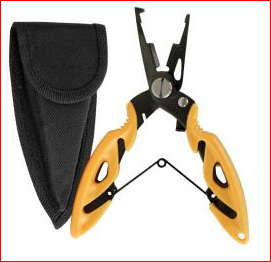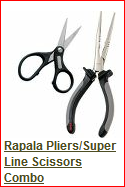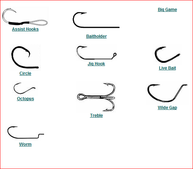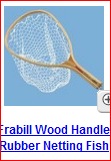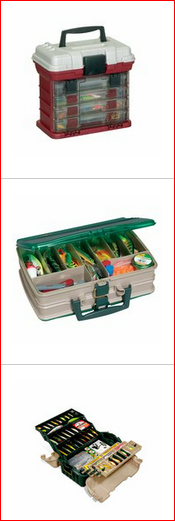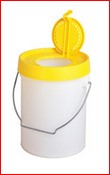Beginners.............
ahhhhhhhhh - the beauty of a clean slate
If you do not have a clue how to start - consider yourself lucky. Yes - that's correct - I said LUCKY. You will not have the burden of preconceived ideas to battle against, nor will you have the possibly incorrect ingrained ideas of techniques that will work/not work. This is one time that ignorance is actually a positive thing. After we get you set up with the basics, feel free to listen to your imagination and try whatever comes into your mind. Experience - YOUR expereince - not always other peoples - is the best teacher. That is not to say you should ignore the success of others, but do not ignore the thoughts from within. You might just be in the process of developing the next big popular technique!!
BUT when you are starting, it really is best to use the 'KISS' technique. For those of you that do not know, KISS stands for 'Keep It Simple, Silly'. (Well, maybe that is not quite how you have heard it, but we have a GP audience here and want to keep things positive.)
BASIC ELEMENTS you will need to start fishing:
DANGER DANGER DANGER ZONE !!!!!!!!
I put this 'danger' sign up as a sort of tongue in cheek warning prior to entering the next section about equipment.
People love 'stuff' - and it is very easy to get to the place where the more 'stuff' you have the better you think are or can be - that's true for most any sport. Just ask anyone (including myself) that has been fishing any amount of time - they have tons of 'STUFF' and most of it they don't use...!!!
EQUIPMENT (aka Danger Zone!)
On your first trip to the tackle store to get your basic equipment, you will probably be overwhelmed by the amazingly endless array of 'STUFF'. Make no mistake - ALL of it designed to guarantee you catch the bestest/mostest/biggest/heaviest fish you possibly can. Believe me - the longer you fish- the more 'stuff' you will accumulate. Like I said in the beginning - 'KISS" --> keep it simple, silly!!!
OK - now that we got that out of the way.......
You will need a minimal amout of 'stuff' to gte your fishing career started. A spinning rod, spinning reel, line, hooks, bait/worms/lures, a few 'tools' (line snippers, pair of pliers/hook removers for stubbornly hooked fish) and that's about it. Every well known brand/manufacturer has a great entry line of equipment. Maybe a net if you are a little apprehensive about grabbing fish. Suck it up- be brave!!!
If you have any questions, ask the people that are helping you get set up - they should be happy to answer any/all of your questions. If they give you anything less than an honestly helpful attitude - take your business elsewhere. The only stupid question is the one you didn't ask.
Check the yellow pages for your area - fishing/fishing tackle/sports stores. There are many smaller local tackle shops that deserve your buisiness and will be very helpful. There are the larger outlets - Gander Mountain, Bass Pro Shops, Dicks Sporting Goods. All have great basic starting equipment - AND lots more. There are a jillion online tackle stores also. Searches will turn up more than you will ever be able to shop at. The major retailers generally have online portals also.
I posted the danger warning at the beginning - it is good to remind yourself of that occassionally when faced with the blazing array of 'stuff' you will see when you enter those hallowed retail halls we all worship!
|
SPINNING ROD AND REEL - that is the mainstay of your beginning fishing equipment. At most all tackle stores, there are many decent 'combos' - rod and reel pre-packaged together. You should be looking for a medium strength 6 - 7 ft rod. If you are on the shorter side, or you are a kid 6 to 6 1/2 ft is probably long enough for you. But try a shorter and a longer rod to see how they feel - 6 1/2 to 7 ft is a good starting length. If you get a combo - the reel will match the rod and be perfect for it. Many times the reel has line on it already. If it does not, the salesman can spool it up for you with a good line.
LINE There are two main types of line for beginners - monofilament and flourocarbon. There are many more types - but for beginners, these are the two you need to consider. Mono (10-12 lb. test - that is a measure of the strength of the line) has a little more stretch and a little less sensitivity than flourocarbon, but is less expensive. It is a fine line for starters and as you fish, you can try a different line as you gain experience to see what a difference it might make. I remember the first time I tried flourocarbon - it was like night and day - I could feel a LOT more on the end of my line. But everyone is different - mono is a great place to start and is more durable and more forgiving than the flouro also. LINE/POLE/ WHAT NEXT??? Now that you have the rod/reel/line - what the heck do you tie on it ?? When you are getting your rod/reel combo, ask the salesman what they can recommend for hooks. Worm hooks/live bait hooks (for earthworms/minnows) are a great place to start. You might want to get a package of minnow hooks also. Live bait is generally the easiest way to catch fish, and easily available at almost all tackle stores. Just remember - keep the worms/minnows cool and out of direct sunlight. They are living things and sensitive to extremes of heat - they can die before you get to the water if you do not protect them. The salesperson will have great hints for the size/technique and equipment needed. If you are using live bait, it is generally a good idea to get a few bobbers - the salesperson can recommend how to use them too. Or google it. there are thousands of fishing videos on line with equally as many interesting ideas. Like an Easter egg hunt - good job for the kids prior to going to the store for the first time. Make a list - check it twice, and hopefully you won't end up with twice as much stuff as you need (remember the DANGER zone). SPEAKING OF TYING !!!! You absolutely ned to be abkle to tie a proper fishing knot. If you can't - the very first fish you almost catch will manage to pull your hook off the line long before you ever get it to the boat. There is only ONE knot you need to know right now - that is the PALOMAR knot. You can learn to tie this very inportant/very EASY important knot here: http://www.youtube.com/watch?v=X_gv8nBq3qI or here http://www.youtube.com/watch?v=UNBCkPZg5gw Here are a bunch of different knots; http://www.outdoorlife.com/photos/gallery/fishing/2008/09/10-knots-you-must-know?photo=0#node-1000022809 watch this one up until the 3.06 min mark - until after he ties the palomar knot and tightens it - then he starts talking about a technique called 'drop-shotting'. But that is a different technique - all you need is to tighten that knot and trim the tag (loose) end fairly close to the hook. Dropshotting is a really fun thing to try when you start branching out into different techniques. ROD/REEL/LINE/HOOKS/BAIT/plus ????: There are a few other items you might find useful. --> small net (for particularly hard to get a hold of fish) --> hook remover/ pliers/leatherman - there are many times fish get hooked in difficult places - maybe where fingers find it hard to reach - the pliers are invaluable at times. They allow you to securely hold the hook and keep your hands out of harms way. --> line snips of some sort - you will needed to cut your line for many reasons (attach new hooks, cut out snarls/tangles, trim tags ends off your knots etc.) WORD OF WARNING: remember - ANYTHING made of metal sinks - QUICKLY I know that sounds a little simplistic but I am not being sarcastic or trying to be funny here. Hooked fish do a LOT of unexpected things - flip flopping around and it is extremely easy to have equipment knocked out of your hands in the blink of an eye. I have learned that the hard/expensive way. SO - if you happen to be using metal tools around the fish/over the water, make sure you have either floats tied to the objects or a lanyard/wrist strap you can quickly slip around your wrist when you first grab the tool - incase the fish flips/flops unexpectedly (which is most of the time!) A little proactive protection goes a long way. A simple, inexpensive string tied through the end of the tool and looped around your wrist can save the day. ROD/REEL/LINE/HOOKS/BAIT/TOOLS/ + SOMETHING TO HOLD THEM IN!!! Unless you have an old tackle box from when you were a kid, you will need something to hold all your 'stuff' in. It avoids losing/leaving your stuff all over the place - that WILL happen without a proper place to store it. Any type of container will do. Some type of box/container from home is just fine. There are many inexpensive smaller tackle boxes available at the store. An inexpensive flip top plastic 3600 or 3700 Plano tackle box can be purchased for not much money, Or you can go fancier and get a real tackle bag with separate compartments for EVERYthing you have so far. (remember the DANGER zone - beware !!!!) But keeping your stuff organized is a BIG plus so as not to waste time looking for things. A place for everything and everything in its place. TO THE LAKE !!!!! For the first trip, pick a day when the weather is nicely warm/not too hot/too cold. This is especially important if you are bringing kids along on a first time trip. That way, you can concentrate on the fishin' - not on clothing and/or being comfortable/uncomfortable. Don't plan a long trip. If the interest in fishing wanes - go exploring along the shoreline - fish again later - the bite might be better. Flexibility is the key. Whatever it is you do that day - make it fun. Bring a pair of binoculars if you have a set. Pack a lunch - take time to eat it out under the trees/on the boat/where ever it suits everyone. Save a piece of bread for the eventual ducks you will see - ALL ducks like bread. See how close you can get them to come - some of the tamer ones will almost eat out of your hand! If you run out of worms don't dismay - always bring a few extra slices of bread. Pinch off a small piece from a slice - about the size of a 50 cent piece. Roll it between your fingers - making a little 'dough-ball'. Stick it on one of your little hooks, and drop it in the water under a bobber. Panfish go nuts for these. the fresher the bread the better it sticks together and the longer it will stay on your hook. Make sure you try this even if you have worms - the fish might like them better this particular day. One thing you will eventually learn - fish can be about as fickle as a, er . . . . they can be fickle - VERY fickle. One day they won't leave dough balls alone. The next day you go out, they will not SNIFF at a dough ball. Welcome to the complex world of fishing. It is never EVER a sure thing. It is one of THE most confounding/challenging things you will ever love to do. If you like things easy/always the same/piece of cake style - maybe you should reconsider your new future recreational activity. If you see someone catching fish and you are not - go ahead and politely ask them "would you mind terribly if I asked you what you are using??? I have been fishing for (amount of time) and I have not caught a thing!' Generally if you add a little flattery, there isn't an angler out there that won't willingly share their techniques. It might be as simple as just adjusting the length of line you have under your bobber. The fish may either be deeper or shallower than you have been putting your bait. SO - if you are not having any luck - don't be afraid to change things up a l.ittle. It might be just what the fish are looking for! One thing to note - if you use baitfish - you will need a baitfish bucket. Baitfish are notoriously fragile. the buckets they have at the baitstores are generally made of insulated styrofoam - a necessity. The warmer your baitfish water gets - the quicker they die. Dead baitfish are not near as effective as the live ones. They are better than nothing, but not much. |
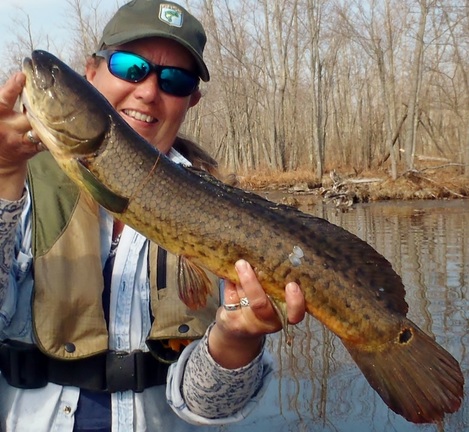
What kind of fish is THIS...?????
Clue - it is a 'Snakehead' look alike, but it is native (not harmful) to NY waters - and a LOT of fun to catch. it has no season, so you can fish for them ANY time of year. This one was caught in early spring on Oneida Lake - during the really warm early thaw) Go to your DEC Fish Identification pages and figure it out!!
http://www.dec.ny.gov/animals/7014.html

